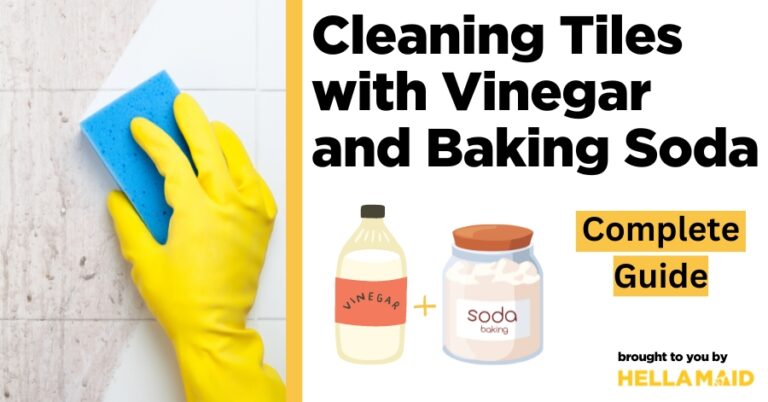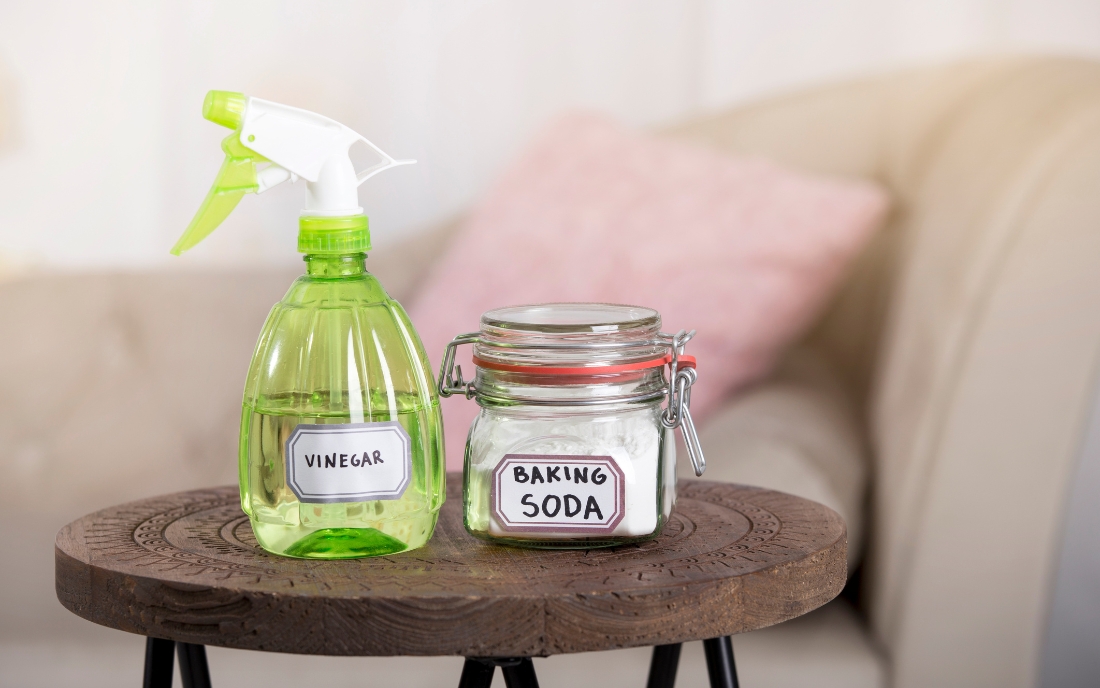When it comes to keeping your tiles sparkling clean, few natural ingredients are as effective as vinegar and baking soda. These kitchen staples not only tackle dirt and grime but also leave your tiles gleaming without harsh chemicals. In this comprehensive guide, we’ll explore the power of vinegar and baking soda for cleaning tiles, along with expert tips and tricks to achieve pristine results.
Cleaning Power of Vinegar and Baking Soda
Vinegar, with its acidic properties, serves as a powerful cleaner that cuts through grease, soap scum, and mineral deposits on tiles. Baking soda, on the other hand, acts as a gentle abrasive, helping to lift stubborn stains and grime without scratching surfaces. When combined, these two ingredients create a dynamic cleaning duo that effectively removes dirt while deodorizing and disinfecting your tiles.
DIY Tile Cleaner Recipe: Vinegar and Baking Soda
Here’s a basic recipe on cleaning tiles with vinegar and baking soda:
Ingredients:
- 1 cup white vinegar
- 1 cup water
- 1/4 cup baking soda
Instructions:
- In a spray bottle, combine 1 cup of white vinegar and 1 cup of water. Shake well to ensure thorough mixing.
- For tougher stains and grout lines, create a paste by mixing 1/4 cup of baking soda with a small amount of water until it forms a thick consistency.
- Before applying the cleaning solution, clear the tile surface of any loose debris by sweeping or vacuuming.
- Spray the vinegar and water solution generously onto the tile surface, focusing on areas with visible stains or buildup. Allow the solution to sit for a few minutes to penetrate and loosen dirt and grime.
- Apply the baking soda paste directly to tougher stains and grout lines using a soft-bristled brush or sponge. Use gentle pressure and circular motions to work the paste into the tile surface.
- Scrub the tiles with the brush or sponge, concentrating on areas with stubborn stains or discoloration. The combination of vinegar and baking soda works to break down and lift away dirt and grime.
- Rinse the tiles thoroughly with clean water to remove any residue and vinegar smell. Use a mop or clean cloth to wipe down the surface and absorb excess moisture.
- Allow the tiles to air dry completely before walking on them or replacing any furniture or decor.
Step-by-Step Process on Cleaning Tiles with Vinegar and Baking Soda
Follow these steps on cleaning tiles with vinegar and baking soda effectively:
- Gather your supplies, including white vinegar, baking soda, a spray bottle, water, a soft-bristled brush or sponge, and gloves for protection.
- Clear the tile surface of any loose debris by sweeping or vacuuming.
- In a spray bottle, combine equal parts white vinegar and water to create your cleaning solution. Shake well to ensure thorough mixing. For tougher stains and grout lines, prepare a paste by mixing baking soda with a small amount of water until it forms a thick consistency.
- Spray the vinegar and water solution generously onto the tile surface, focusing on areas with visible stains or buildup. Allow the solution to sit for a few minutes to penetrate and loosen dirt and grime. This pre-cleaning step helps to maximize the effectiveness of the cleaning process.
- Using a soft-bristled brush or sponge, apply the baking soda paste directly to stubborn stains or grout lines. Use gentle pressure and circular motions to work the paste into the tile surface, focusing on areas with tough stains or discoloration.
- Begin scrubbing the tiles with the brush or sponge, using circular motions to lift dirt and grime.
- For grout lines, use a narrow brush or an old toothbrush to reach into crevices and remove embedded dirt.
- Use a mop or clean cloth to wipe down the surface and absorb excess moisture. This step helps to prevent water spots and ensures a streak-free finish.
- Allow the tiles to air dry completely before walking on them or replacing any furniture or decor.
Maintenance and Prevention Tips
To maintain the cleanliness and appearance of your tiles, incorporate regular cleaning into your routine using vinegar and baking soda solutions. Additionally, consider applying a protective sealant to the grout lines to prevent future stains and moisture penetration. By staying proactive with maintenance, you can prolong the life of your tiles and keep them looking like new for years to come.
Safety Precautions
While vinegar and baking soda are safe and natural cleaning agents, it’s essential to take precautions to protect yourself and your surfaces. Wear gloves and work in a well-ventilated area to avoid skin irritation and respiratory issues. Additionally, test the cleaning solution on a small, inconspicuous area of your tiles to ensure compatibility and avoid any potential damage.
Common Cleaning Mistakes to Avoid
- Using vinegar in excessive amounts can leave behind a strong odor and potentially damage certain types of tiles, especially if cleaning natural stone floor or porous materials. Stick to the recommended dilution ratio of equal parts vinegar and water to avoid overwhelming the senses and causing harm to your tiles.
- Failing to pre-clean the tile surface by removing loose debris and dust can result in ineffective cleaning and potential scratching of the tiles.
- Skipping to rinse floor tiles thoroughly with clean water to remove any residue and vinegar smell. Doing this can leave behind a sticky film or residue.
- While baking soda is a mild abrasive that can help lift dirt and stains from tiles, using overly abrasive tools or scrubbing too aggressively can scratch or damage the tile surface. Opt for soft-bristled brushes or sponges and use gentle pressure to avoid causing harm.
- Vinegar is acidic, while bleach is a strong alkaline cleaner. Mixing the two can create harmful fumes and potentially dangerous chemical reactions. Never combine vinegar and bleach or use them interchangeably for cleaning purposes.
- Grout lines are prone to trapping dirt, grime, and mold, making them susceptible to discoloration and staining. Be sure to pay special attention to grout lines when cleaning tiles, you may clean grout tiles without scrubbing or use a narrow brush or an old toothbrush to reach into crevices and remove embedded dirt.
With the combined power of vinegar and baking soda, achieving spotless tiles has never been easier or more environmentally friendly. By following the steps outlined in this guide and incorporating these natural cleaning solutions into your routine, you can enjoy beautifully clean and refreshed tiles without the need for harsh chemicals. Say goodbye to stubborn stains and hello to a brighter, fresher space with vinegar and baking soda!





























